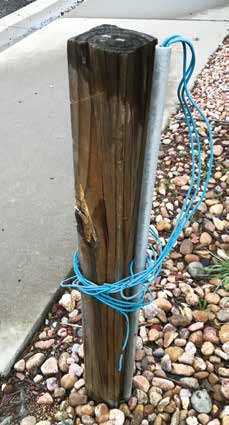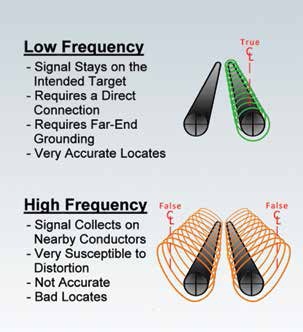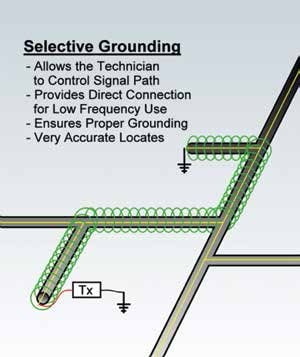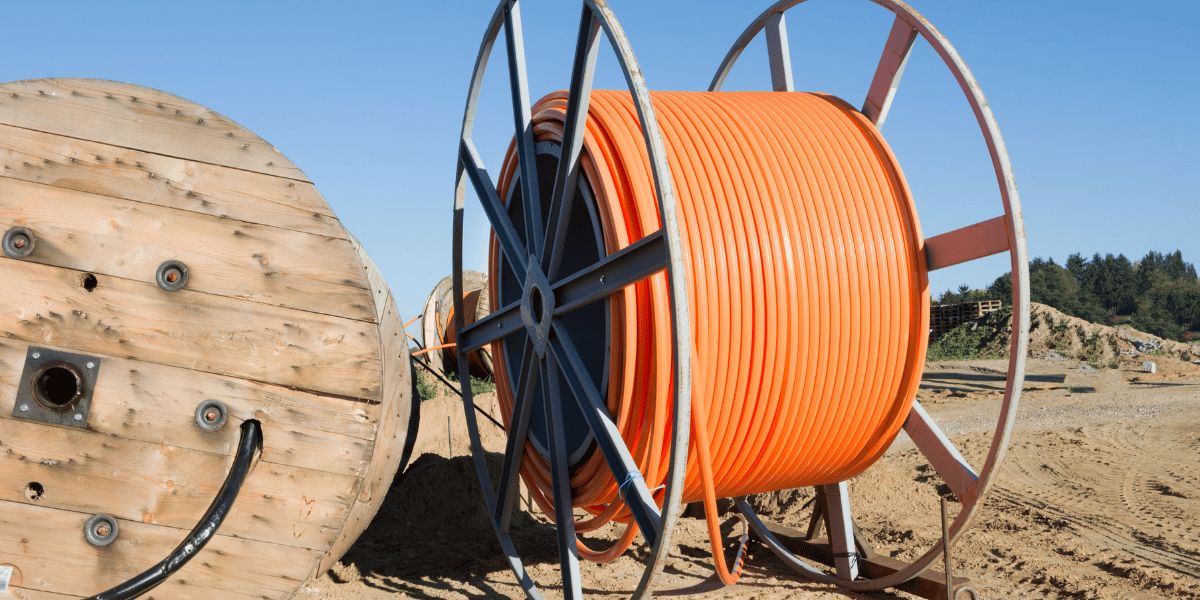Many problems related to accuracy on tracer wire and telecom wire locate systems are directly related to a poor understanding of locating principles. To minimize excavation damage, I would like to expose some of the issues.
THE BASICS
Electromagnetic locating equipment usually consists of two pieces – the transmitter, which sends AC electrical energy along a conductive target and generates an electromagnetic field that surrounds the target; and the receiver, which detects this electromagnetic field and interprets the signal. For accurate locates, the electromagnetic field must be round. If the field is distorted or bent in any way, accuracy is seriously compromised.

Figure A
When a transmitter sends electricity along the target conductor, an electrical return path to the transmitter must exist to complete the circuit. If the outbound electricity cannot return to the transmitter, the circuit is incomplete and no energy will flow. This means an electromagnetic field does not exist, making locating the utility impossible.
There is a huge difference between locating steel pipeline and wires. Steel pipelines are large electrical conductors with relatively thin coatings. When the transmitter energy is applied to a pipeline, electricity travels down the pipe and “leaks” out through the thin coating into the surrounding soil and returns to the transmitter ground rod thus completing the circuit. Wire insulation, however, is chemically engineered to prevent electrical flow to ground. Electricity cannot “leak” into the soil through wire insulation so the far-end needs to be grounded in order to provide the necessary pathway into the soil for the energy’s return trip to the transmitter ground rod. When that happens, a complete circuit is established, and energy can flow and create an electromagnetic field. Unfortunately, when tracer wire systems are poorly installed with the ends left ungrounded, it forces the locator into high frequency use (see Figures A & B).

Figure B
FREQUENCY CHARACTERISTICS
Low frequency creates a relatively small, compact electromagnetic field which tends to stay on the intended target conductor. This translates into cleaner, more accurate, locate results. But low frequency can’t jump air gaps like high frequency can, which is why it requires far-end grounding.

Figure C
High frequency creates a very large, intense electromagnetic field which readily bleeds over onto unintended conductors. When unintended conductors enter these large electromagnetic fields (particularly if running parallel) the intensity of the field generates AC electricity on these foreign conductors. They then create their own electromagnetic fields which compete for space with the original field. When this happens, the electromagnetic fields either attract or repel each other which distorts the original field (see Figure C). This means that accuracy is seriously impacted.
THE PROBLEM
Some say that far-end grounding is unnecessary. They simply turn the transmitter frequency up which forces electricity to jump to ground at the far-end. That is true, but it is a terrible practice in congested areas. It is a huge risk which exposes companies to unnecessary damage. Unfortunately, many locators are unaware of this fact.
THE SOLUTION
The story doesn’t end there. Imagine a tracer wire or telecom locating system which is grounded at multiple points. If a locate technician attaches the transmitter at point A, it doesn’t necessarily mean the locate path will go to point B. Since multiple grounds exist along the system, much of the transmitter energy is likely to run to the best ground, which may not be point B. Creating a strategically grounded system allows a locate technician to easily route the transmitter energy along a predetermined pathway (see Figure D). The time savings alone are huge, and accuracy rises dramatically because low frequencies can be used.

Figure D
POSITIVE SIDE EFFECTS
Passive locating (locating without the advantage of the transmitter) also plays an important role in damage prevention. No one should ever mark utilities without using a transmitter, but passive locating is still a very valuable damage prevention tool. Most receivers can search for weak, transient, lower frequency signals that naturally occur on some utilities. The signals include power (60Hz), radio, CATV, and other low bandwidths. These signals travel through the soil as they return to their source on routes primarily dictated by the easiest available pathway. Ungrounded locate wire systems are not attractive to passive signals because there are very few entry or exit points. This means that ungrounded locate wire systems are considerably less likely to be visible to passive searching. Even though passive locating is less accurate than active locating (using the transmitter), it is a powerful tool in the damage prevention arsenal. After the active locating is complete, performing passive sweeps double-checks for utilities that may have been missed.
SUMMARY
When locate wire systems, including telecom and tracer wire systems, are well grounded at strategic points within the system (system specific grounding), it raises accuracy since low frequency can be used. It also makes these systems much more visible to passive locating and helps minimize lightning damage issues. All grounds should be easily interruptible and all wire segments should be easily isolated from one another. In this way, the locating technician can design the locate path rather than allowing the energy to run wild. When locating single conductors, low frequency should be a locating technician’s first choice, particularly in congested areas. Path control is highly important. Either you control the path or the path controls you. The correct choice is obvious!
Monte Harnden retired from Marathon Pipeline Co. after 39-plus years. He is founder and CEO of Center Line Resource locator training (est. 2006) and a senior product development consultant for Tracer Wire Technologies. He can be reached at monte@tracerwiretech.com.

Comments